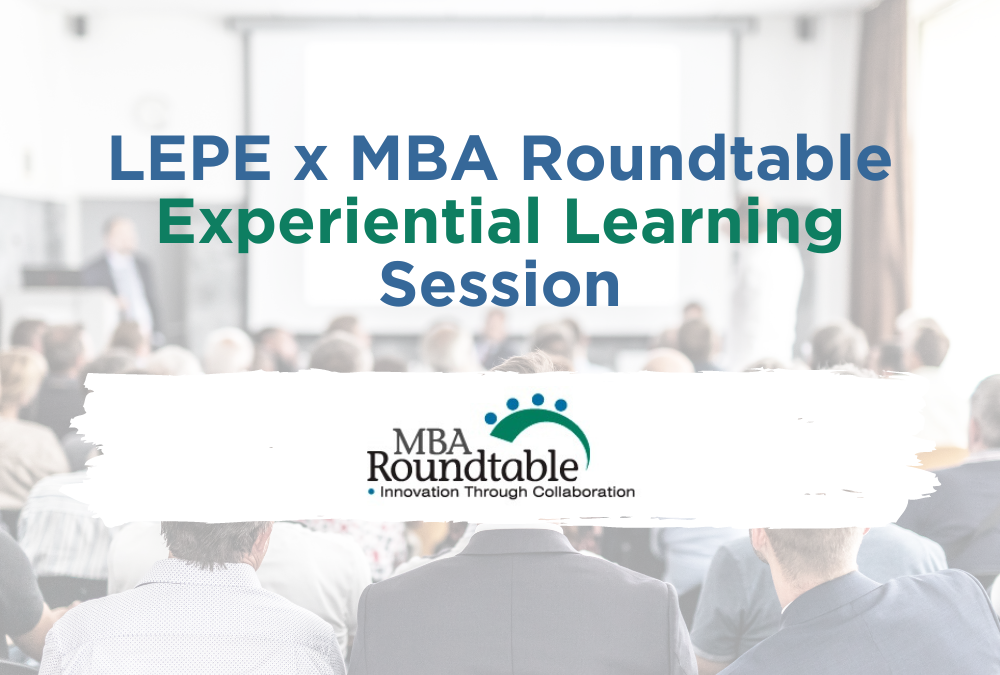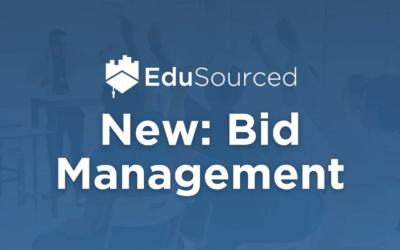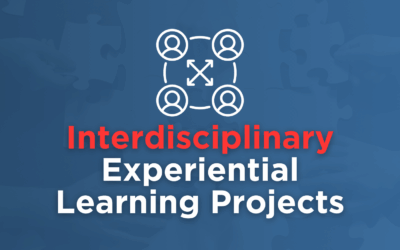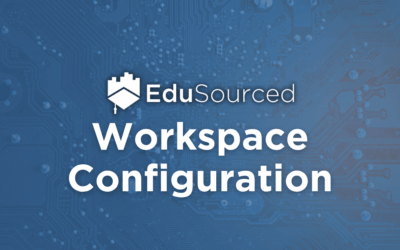Part one of this post is available here. Download the slides from this LEPE session here.
LEPE Session: Managing Experiential at Scale and Optimizing Learning
Managing experiential at scale is the context of nearly every topic covered in this LEPE workshop. With enough faculty, staff and hours in the day, anything is possible but in the world of constraints, implementing experiential efficiently is the only path to scale.
The presenters mentioned repeatedly the absolute need for technology to achieve scale of experiential. Be it an all-in-one tool like EduSourced or separate piecemeal tools to manage things, technology really is crucial to running experiential at scale.
Identifying issues with teams or projects before it is too late is perhaps the most common issue we hear from schools and again, is perhaps the biggest challenge of managing experiential at scale. If a faculty is managing two or three teams a time, there is time for regular in-person check-ins with both students and clients. But for growing programs, a ratio of five or more projects per faculty is more common.
People completely shut off to learning if they go from the comfort zone, to the learning zone, to the panic zone. In the panic zone, learning does not happen.
Kerry Laufer, during her presentation at the MBA Roundtable Experiential Workshop
Identifying team issues before they are too late is the key to avoiding that panic zone. One answer, proposed at the workshop was a green/yellow/red indicator for project health based on a regularly administered (every 1-2 weeks) check-in survey for students. Incidentally, we are have been planning such a feature for release this summer that will incorporate a pulse survey and analytics on student and client engagement to identify the health of the team in EduSourced.
Experiential in part-time programs is tricky and in any survey data I have seen, consistently experiential projects are less common here than in the traditional, full-time MBA. The key constraint: time. Part-time programs mean evening courses are decidedly outside of normal business hours, making it hard for students to connect with their employer clients.
Participant Sandy Kenny reports how she brings live projects into her part-time programs at the Eller College of Management at University of Arizona: by scaling back the program to only two clients for a course of 40 students (presumably broken down into several student teams per client). This reduces the pressure to source harder-to-find clients who are a good fit for a part-time program and is supported by the reduced time commitment of each student, making multiple teams a viable commitment for the client.
Participant Brian Andriano of George Washington University’s School of Business was quick to note the value of sharing these expectations with clients upfront. I second this suggestion: I have observed across many schools a hesitation to express clear client requirements, perhaps for fear of losing or alienating them. Yet when we talk with project clients or sponsors, they commonly express confusion of what is expected of them. I submit that expectations being communicated upfront with clients is a win for all involved and may result in higher client satisfaction.
Experiential learning has become table stakes.
Kerry Laufer, during her presentation at the MBA Roundtable LEPE Experiential Workshop
What was once a powerful point of differentiation, experiential project-based learning has become de rigueur. Yet there remains opportunity to differentiate by running your experiential programs effectively to maximize student impact and efficiently to maximize growth or scale of your program.
Presenter Michellana Jester reports that while students may not choose Sloan for its experiential opportunities as a general offering, students do often report attending Sloan for a specific experiential program, in her specific case, Sloan’s Global Entrepreneurship Lab (G-Lab). G-Lab is a substantial program with multiple faculty advisors, a multidisciplinary approach and a subject matter that could not be more engaging: international entrepreneurship with a focus on identifying the kinds of entrepreneurship that thrive in various countries. A good example of a thoughtful experiential program that checks a box but also differentiates with its unique value to students.
Planning ahead to look back
Shannon McKeen provided the anecdote that teams often put together a project charter before beginning work on the project, only to never review it again until the project is ending. He feels this is a missed opportunity, that students and their faculty (or experiential program staff) should be reviewing these directives often throughout the project, to ensure they are meeting their stated goals.
Perhaps related to following a project charter throughout the project: I have heard from several project clients (and experienced this myself as a project client in the past) that they experience the “over the wall” effect where they throw an outline of their project needs “over the wall” to program faculty or staff only to have a deliverable thrown back to them at the end with not enough client-team check-ins between.
Actionable Takeaway
Define a list of expectations with your project client and require commitment to those expectations from the client before the project begins. Hold them to it! If a client materially strays from these expectations, note it for future engagements.
Kerry explains that a team of students can each experience the same project very differently. That there is value in students sharing their impressions of the project’s outcome with one another and discussing specifically any differences of perception. Shannon adds that additional reflection sessions throughout the project, anchored by review of the 360 peer review results, is helpful for students. I recommend faculty involvement in these sessions to help make sense of the results and to provide context for what can be very personal feedback.
The role of emotion was highlighted by Michellana, specifically its positive value to the learning experience. Everyone involved with team-based learning knows emotions can and will flare; Michellana explains that emotion increases recall and therefore strengthens learning and so is an asset if properly managed. Robert Plutchick’s Wheels of Emotions was referenced as the framework for understanding the emotions students experience. Interestingly, she explains that emotions are usually peripheral or avoided altogether by educators but that they should be embraced for their learning-enhancing value. Tools like the Global Mindset Inventory and simple team meetings for reflection were recommended.
Kerry suggests a simple tactic for defusing the more destructive side of emotions in teamwork: having students discuss (at the project’s beginning) their particular emotional sensitivities. She reports that this lessens the impact of those sensitivities or buttons being pushed once things inevitably heat up among the team.
As more of these sessions are conducted and experiential programs communicate more than ever across schools, Best Practices will finally emerge. As with everything in education, this process is rather slow, but maybe that is okay. Experiential projects are a tremendous undertaking and incremental improvement over time is all anyone could ask for.
Recommended reading (if you haven’t already): Taking Measure of Experiential Learning from the presenters of this workshop. Keep an eye out for an upcoming entry in the Texas Education Review that further expands on this article.
For more about experiential learning in Higher Education, check out our Experiential Academy by EduSourced Insights and Best Practices.




